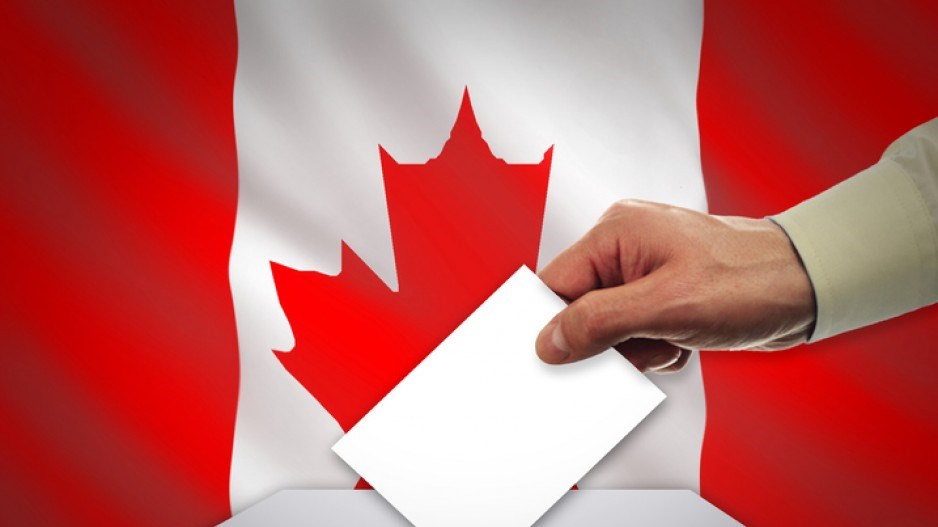Over the past few weeks, the notion of the federal government holding an early election has been discussed at length.
Capitalizing on the inexperience of an incoming leader of the Opposition can result in a fresh mandate and more seats, as Jean Chrétien’s Liberal Party proved in 2000 just 20 weeks after Stockwell Day became the leader of the now-defunct Canadian Alliance.
The country’s situation is extremely different two decades later. Erin O’Toole is the new leader of the Conservative Party, and today’s federal Liberals – unlike Chrétien’s version two decades ago – oversee a minority government. An election in the middle of the COVID-19 pandemic may be problematic for the governing party.
In the latest check on federal politics by Research Co. and Glacier Media, the Liberals remain ahead. Almost two in five decided voters (38%) would support the Liberal candidate in their riding, with the Conservatives at 32% and the New Democratic Party (NDP) at 17%.
On a regional basis, the most compelling race would take place in British Columbia, with the Conservatives currently at 34%, the Liberals at 31% and the New Democrats at 29%. The governing party remains dominant in Ontario with a 13-point lead over the Conservatives (43% to 30%), while Alberta is still solidly behind the Tories (58%).
Canada’s three minor parties have seen some fluctuations since our last survey in May. The Bloc Québécois has jumped to 8% nationally (and 34% in the only province where it fields candidates, five points behind the Liberals). In Quebec, the Conservatives, new leader and all, are at 12%. It will take a lot of work for the Tories to become competitive again in this province.
For the Green Party, the situation is dire. As the party stands to select a new leader to replace Elizabeth May, the Greens have dropped to 3% across the country. Even in British Columbia, the party has fallen to low single digits (4%). The proportion of Canadians who think the environment is the most important issue facing the country stands at 7%, a number that is pushed to respectability by 16% of Quebecers – one of the provinces where the Greens have never elected a Member of Parliament.
The People’s Party is at 1%, with 2% of Canadians saying that Maxime Bernier would make the best prime minister. Some may have expected Conservatives who were disenchanted with O’Toole’s victory in the leadership race to give the People’s Party a second look. So far, this is not happening.
The issue landscape once again shows a country rich with regional concerns. The top issue in Canada is the economy and jobs (30%, climbing to 52% in Alberta), followed by health care (25%, but reaching 44% in Atlantic Canada) and housing, homelessness and poverty (12%, but at 19% in British Columbia and Ontario).
It is important to note that only 9% of respondents to this survey selected “Other” when asked what the biggest issue facing the country is. Many of them typed in “COVID-19” or a different variation of the term.
As we reported on earlier this month, the level of satisfaction from Canadians in how the federal government has handled COVID-19 remains high (64%, 25 points higher than the 39% of Americans who are content with their own federal administration). Still, it is clear that COVID-19 does not take precedence over the action that Canadians demand on other issues. Most Canadians have already made peace with the fact that the pandemic, with all of its consequences, will be with us for a few more months.
The personal appeal of party leaders is also crucial if a federal election happens before the end of the year. A majority of Canadians (51%) approve of Justin Trudeau’s performance as prime minister and Liberal leader. Only Jagmeet Singh of the NDP comes close (44%), but the New Democrats continue to be plagued by a sizable gap in sympathy for their leader and votes for their candidates.
At this stage, O’Toole divides Canadians in three practically identical components: 33% approve of his performance, 34% disapprove of it, and 33% are undecided. The numbers are lower on disapproval than what Andrew Scheer posted in the eve of last year’s federal election. We will have to see how the undecideds turn once they get to know the new leader of the official Opposition.
If an election took place tomorrow, not much would change. For the NDP, as it was in the second federal balot where the party was led by Jack Layton in 2006, it becomes a matter of expanding the seat count. The chances of the Conservatives hinge on O’Toole establishing a superior emotional connection and a viable economic recovery plan. At this point, even with the extraordinary level of satisfaction with how the pandemic has been managed, there is no guarantee of a majority government for the Liberals.
Mario Canseco is president of Research Co.
Results are based on an online study conducted from September 11 to September 13, 2020, among 1,000 adults in Canada. The data has been statistically weighted according to Canadian census figures for age, gender and region. The margin of error, which measures sample variability, is plus or minus 3.1 percentage points, 19 times out of 20.




